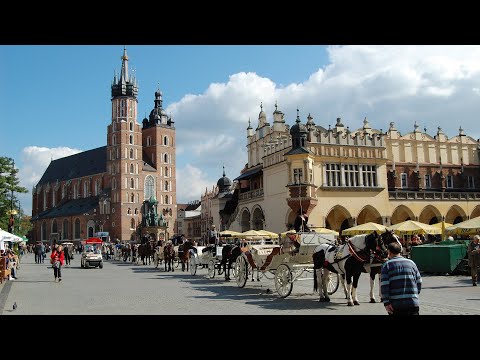
Poland, a country steeped in rich history and cultural heritage, offers an evocative blend of medieval charm, poignant historical sites, and modern vibrancy. Among its cities, Kraków, Auschwitz, and Warsaw stand as testaments to both the resilience and the transformation of Poland throughout the centuries. Each destination provides a unique perspective on the country’s past and present, making them essential stops for anyone wanting to understand Poland’s complex narrative.
## Kraków: The Cultural Heart
Kraków, one of the oldest cities in Poland, continues to mesmerize visitors with its medieval architecture and artistic ambience. As the royal capital for centuries, it houses Wawel Castle, a symbol of national pride where Polish kings were crowned. The castle overlooks the Vistula River, providing picturesque views that blend seamlessly with the city’s historic fabric.
The Main Market Square (Rynek Główny) in Kraków is one of the largest medieval town squares in Europe. Dominated by St. Mary’s Basilica with its stunning altarpiece carved by Veit Stoss and punctuated by the hourly trumpet call from its highest tower — a tradition that harkens back to a 13th-century Mongol attack — this area thrives as a social hub filled with cafés, street vendors, and art galleries.
Jewish heritage is palpable in Kazimierz district. Once a separate city primarily populated by Jewish residents before World War II; now hosts annual festivals celebrating Jewish culture and music that brings life into its synagogues and streets once filled with despair during Nazi occupation.
## Auschwitz: A Solemn Reminder
Just about 40 miles west of Kraków lies Auschwitz-Birkenau Memorial and Museum — perhaps one of the most significant but mournful sites connected to World War II’s brutal history. Originating as a concentration camp during Nazi occupation in World War II; now serves as a chilling reminder of more than 1 million lives lost during Holocaust — predominantly Jews alongside Poles, Romani people among others who were persecuted under Hitler’s regime.
Visitors to Auschwitz can walk through the haunting remains including barracks where prisoners lived under dire conditions; “Death Wall” where many faced execution; or Birkenau site where countless were led directly from trains onto gas chambers built expressly for mass extermination purposes. The museum doesn’t just recollect horrors but also educates about human rights abuses aiming towards ensuring such tragedies never recur.
## Warsaw: Resilience Redefined
Warsaw presents itself as both testament to Polish resilience after being almost entirely destroyed during WWII but also as pulse point on modern European life today. After war left 85% buildings damaged or razed entirely during 1944 uprising against German occupation – which took significant toll not only structurally but also soulfully – Warsaw underwent painstaking reconstruction particularly Old Town area meticulously rebuilt using Renaissance paintings which earned it UNESCO World Heritage status reflecting endurance spirit embodied within city walls.
From historical perspectives like Royal Castle rebuilt post-war based on Bernardo Bellotto’s detailed paintings which helped guide accurate restorations; up until contemporary landmarks like Palace Culture Science (a ‘gift’ from Soviet Union that still dominates skyline) — Warsaw bridges past traditions forward-thinking innovation seamlessly making it dynamic European capital worth exploring more deeply beyond surface level impressions left behind scars wars inflicted upon it over decades spanning centuries-long narratives yet untold fully until immersed firsthand experiences those visiting Poland might encounter first time around newly rediscovered realms awaiting throughout this fascinating nation overall.
